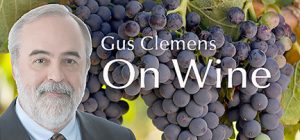Organic and biodynamic are two big buzzwords in wine. What exactly do they mean? While many practices overlap, they do not mean the same thing.
In the U.S., organic wine falls into two categories: “organic wine” and “wine made with organically grown grapes.”
Organic wines are certified by the United States Department of Agriculture (USDA). Grapes must be grown with natural fertilizer; no synthetic fertilizer. All the ingredients that go into making the wine must be certified organic. No sulfites may be added, although naturally occurring sulfites are permitted. These wines may display the USDA organic seal.
“Made with organically grown grapes” is slightly different. The wine can only be made with certified organic grapes, as with organic wines. Some ingredients in the winemaking, however, do not have to be organic. A small amount of sulfites is permitted, but not to exceed 100 parts per million. Yeast and other agricultural ingredients do not have to be organic, but they cannot be genetically engineered. On the label they can state the wine was made from organically-grown grapes, but they cannot use the USDA organic seal.
Biodynamic is a specific grape-growing method developed in the 1920s by Austrian philosopher Rudolf Steiner. It largely is based around an astronomic calendar. Each day coincides with one of the elements of earth, fire, air, and water. Days are organized by fruit days (time for grape harvesting), root days (pruning), leaf days (watering), and flower days (when the vineyard should not be touched).

In addition to the biodynamic calendar, Steiner focused on fertilizer preparation. One technique involves filling cow horns with compost. The horns are buried in the vineyard and later dug up and the compost distributed to the vines. Biodynamic employs organic practices—no pesticides, no synthetic fertilizer. Biodynamics allows up to 100 parts per million of sulfite, so they may not qualify for the USDA organic seal.
Since 1985, Demeter USA has certified biodynamic farms and practices, which involves more than grape vines. There are standards for beekeeping, for instance. There are strict standards around imported fertility, greater emphasis on farm solutions for disease, pest, and weed control, and in-depth specifications around water conservation and biodiversity.
Sum up: biodynamic wines may not be organic wines, but can be. Organic wines are not necessarily biodynamic, but can be. Both reflect attention to responsible, sustainable farming.
Last round: The problem with being a wine cork is you always end up getting screwed.
Email: wine@cwadv.com. Newsletter: Newsletter link. Website: gusclemensonwine.com. Facebook: Gus Clemens on Wine. Twitter: @gusclemens

